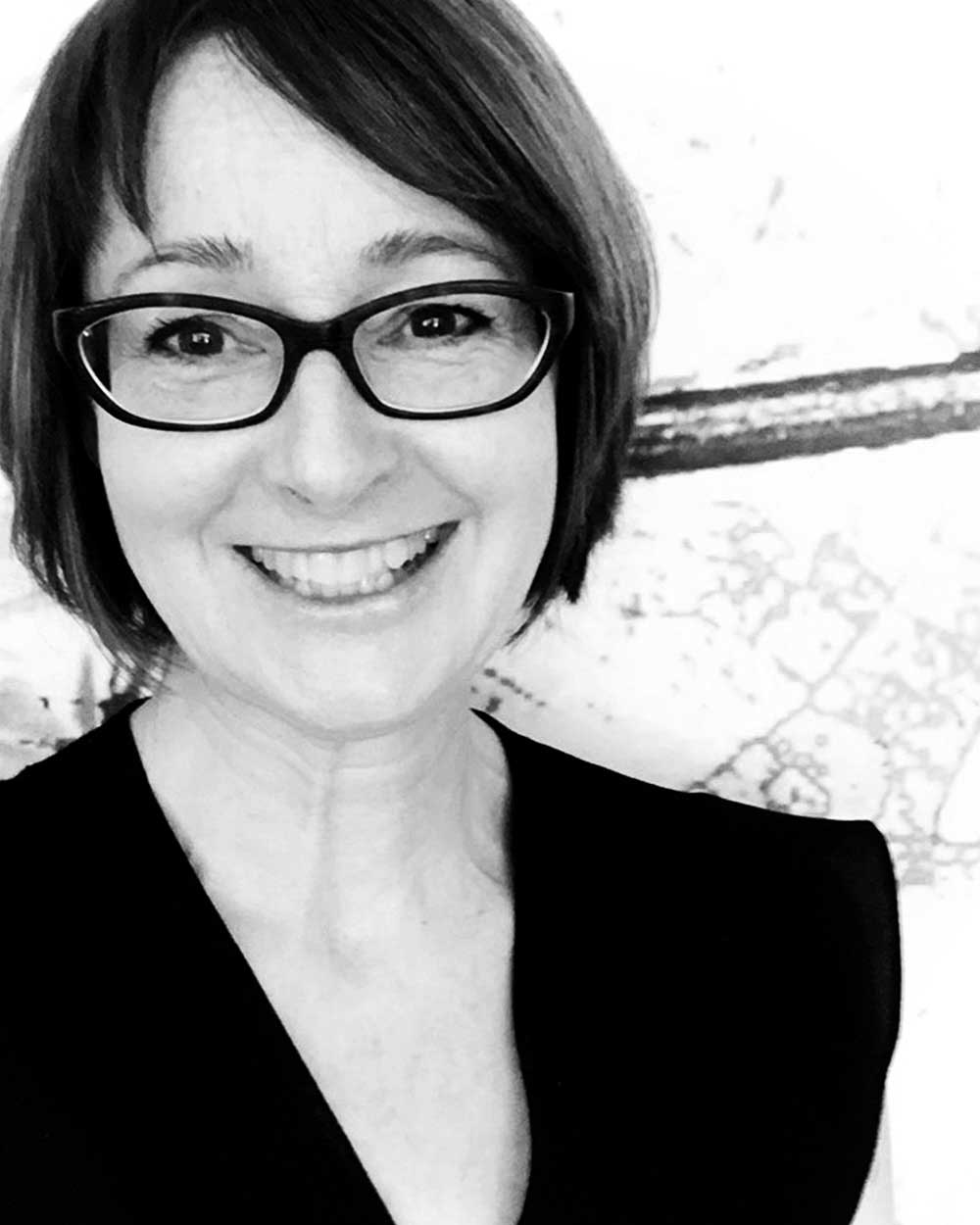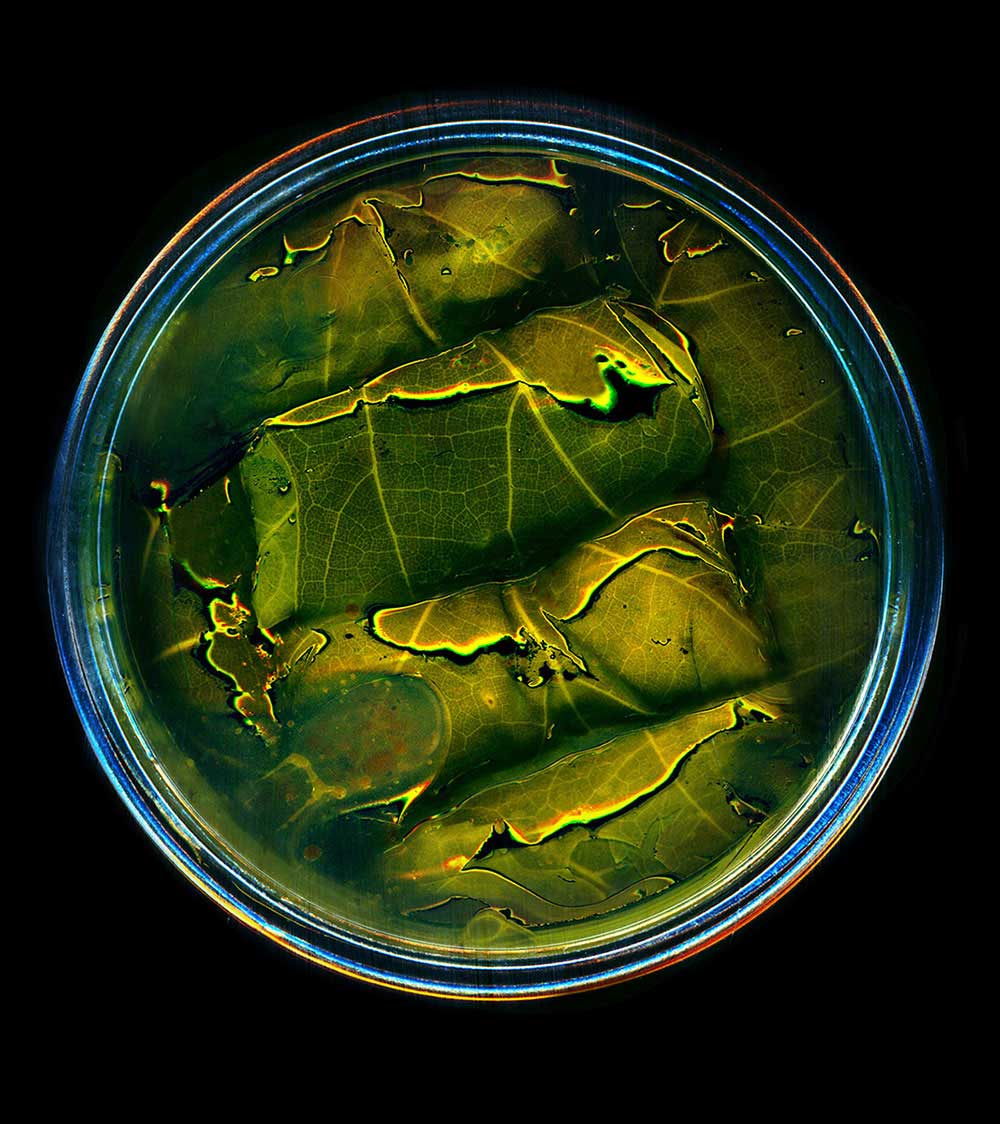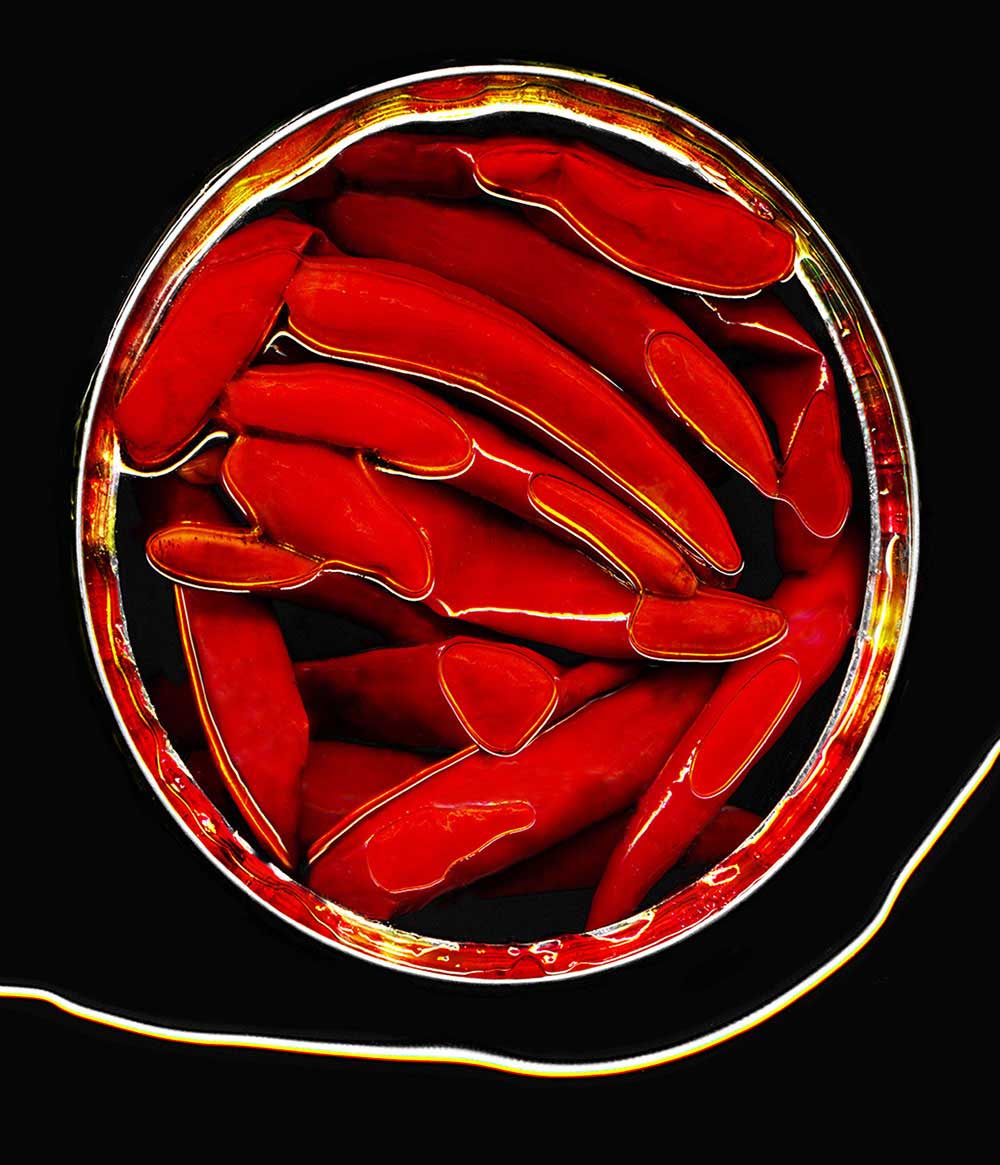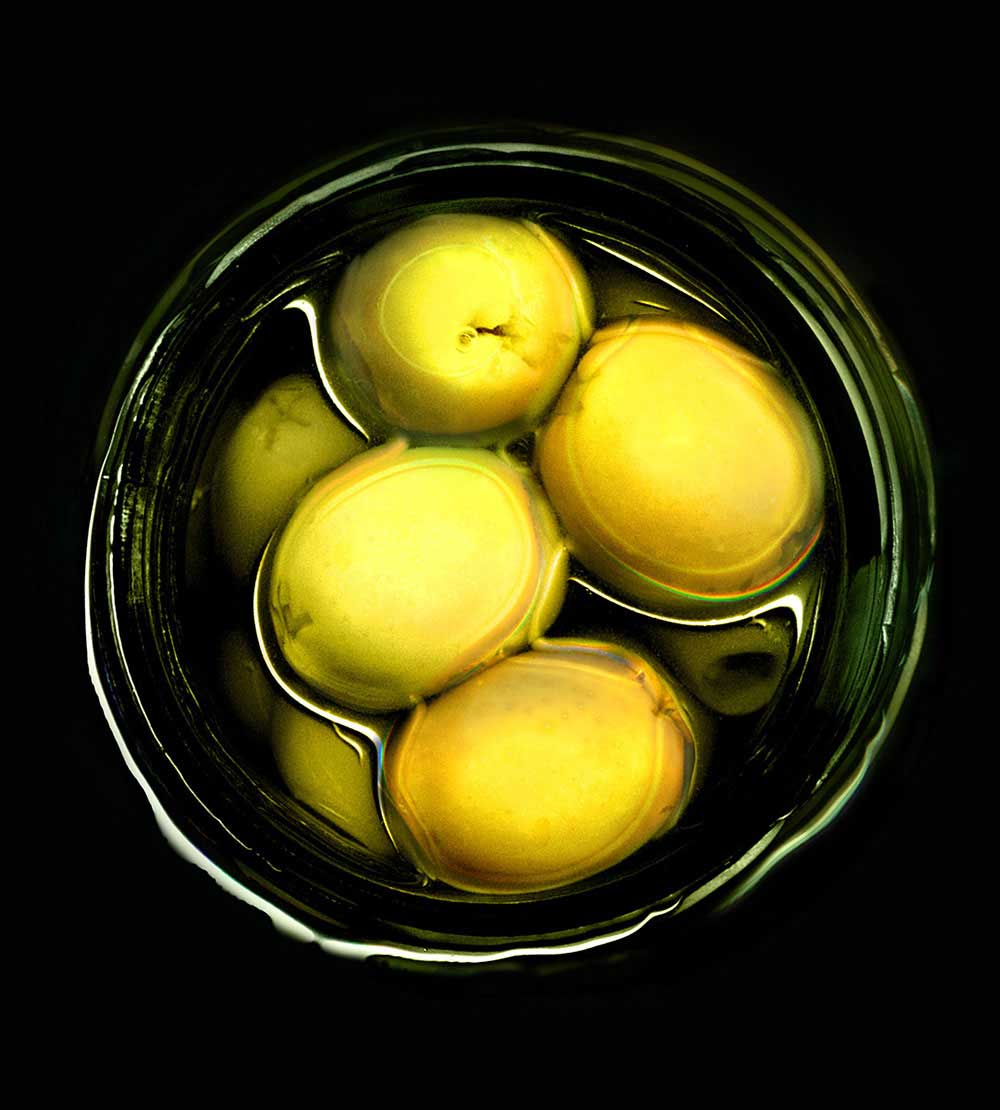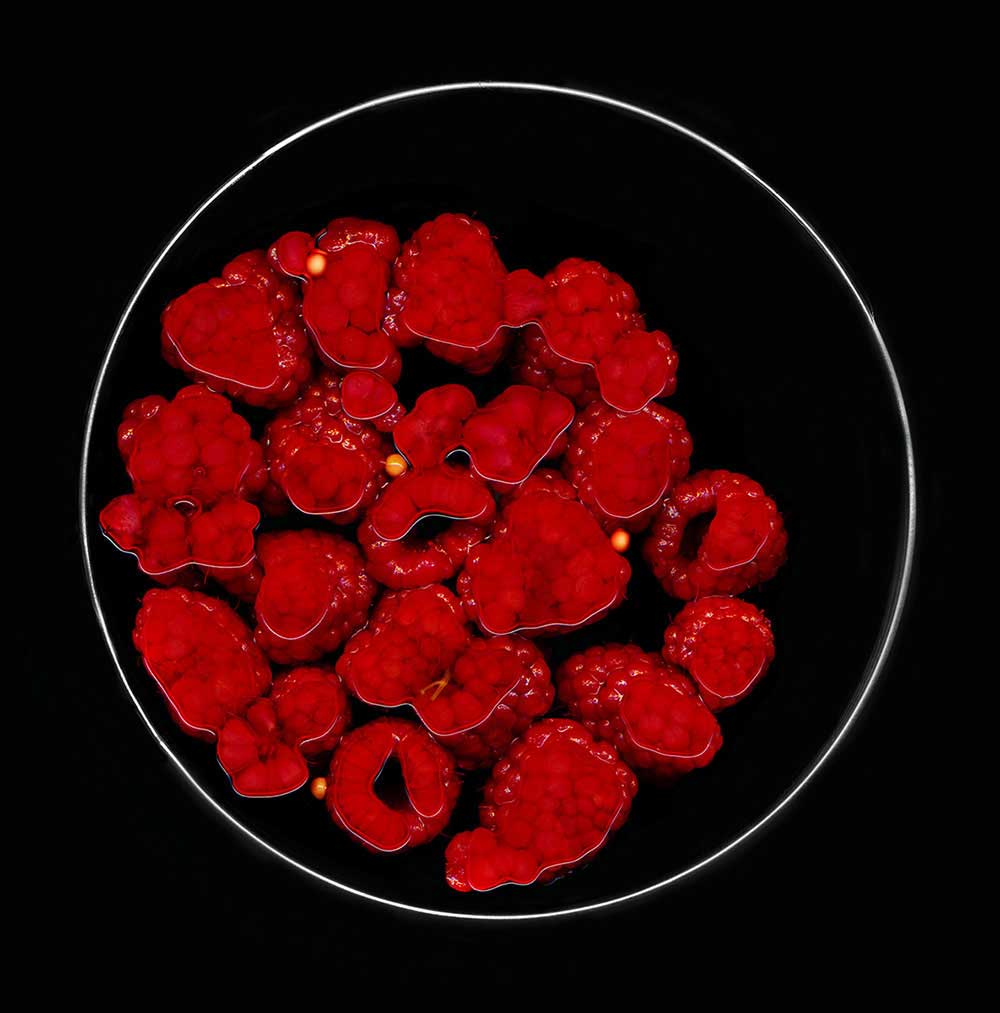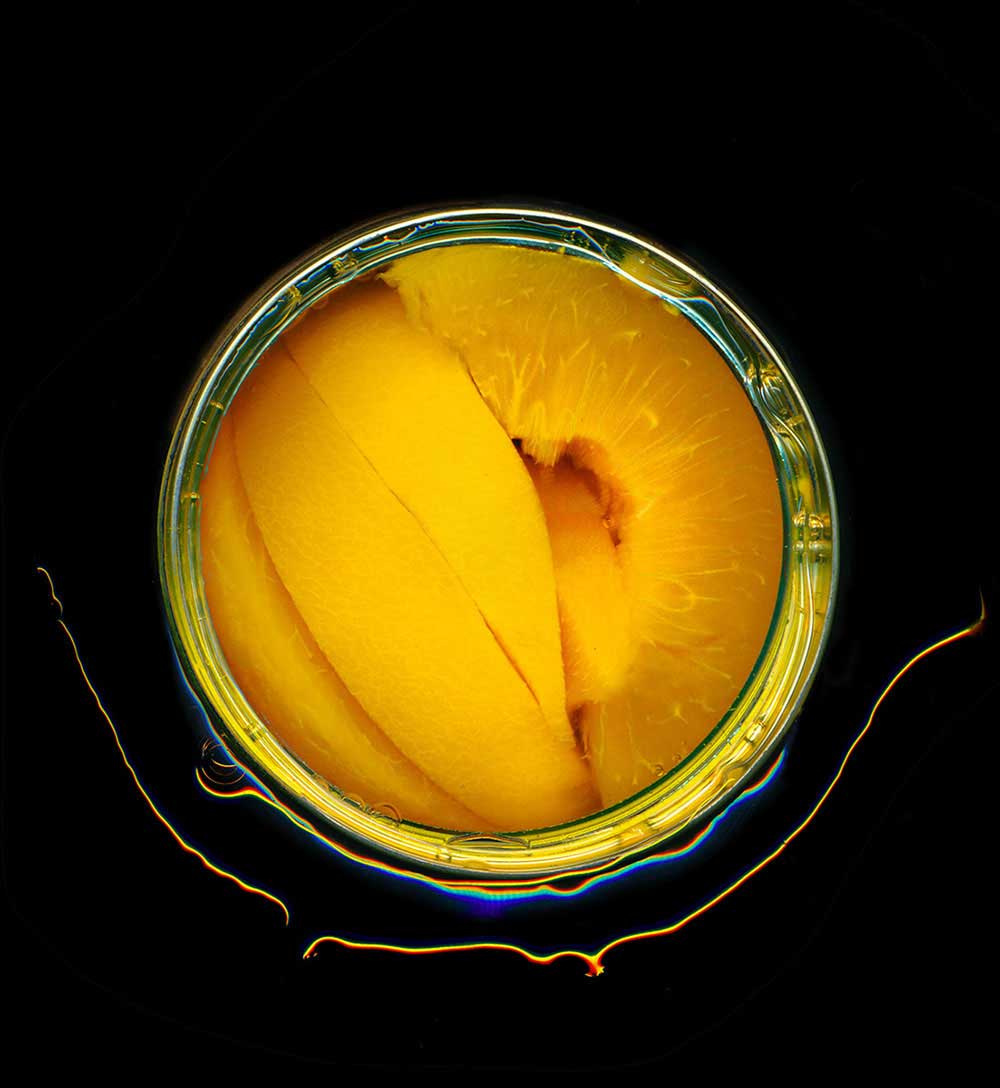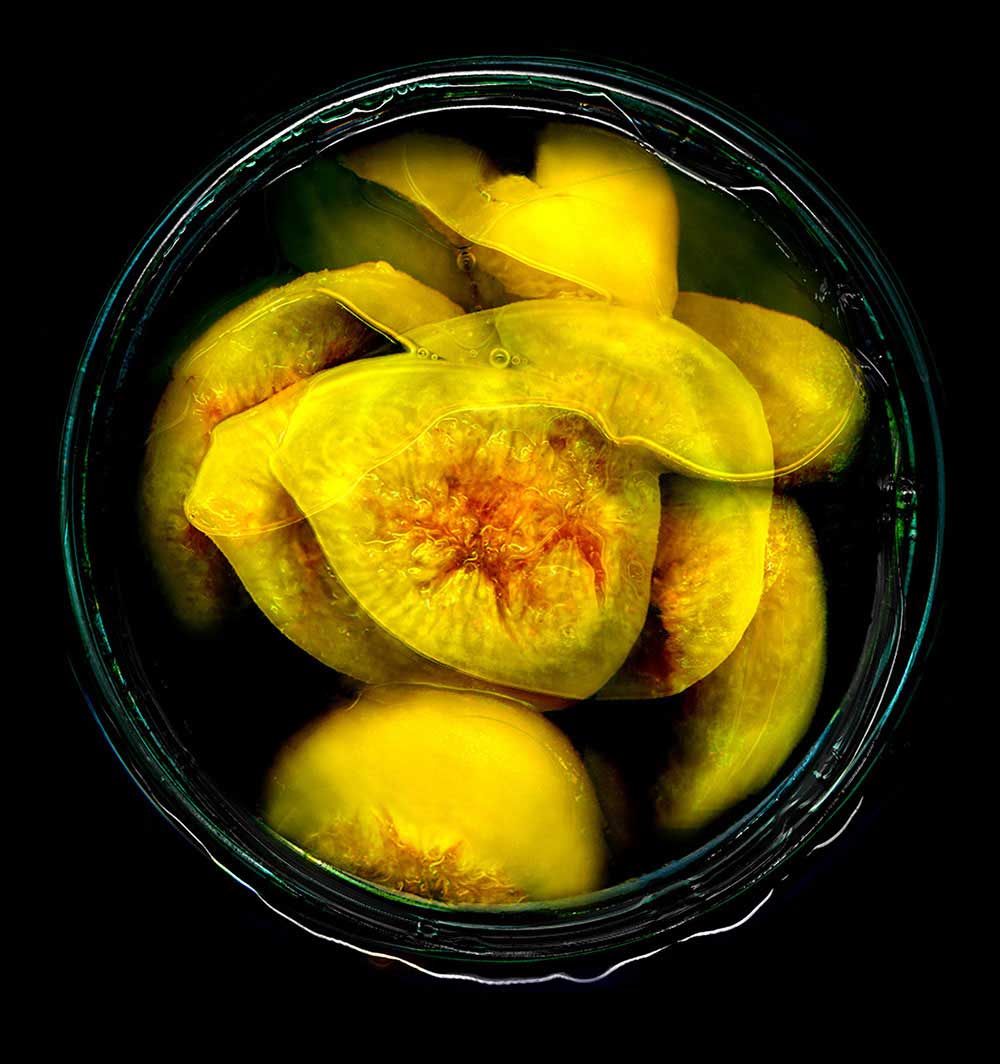Anne Mason-Hoerter is a Canadian photographer who experiments with the combining of multiple image scans and digital data in the areas of Food and Botanics.
A form of Hypercollage in which a final image can contain over 100 single images. She was captivated very early on by extreme photographic manipulation techniques as a photographic student at the Ontario College of Art. Still today, Anne is in a continual search for unconventional ways in which to present food and botanical subject matter. Her images have been described, by many, as that of swaying between reality and surrealism. Her photographic imagery have won numerous international awards from across a variety of genres, especially in food advertising. She was shortlisted for 3 consecutive years as Wildlife Photographer of the Year at the National History Museum, London. [Official Website] [Print Edition]
Before I go on to discuss ‘Canned Food’ I would like to briefly say that your food photography is an incredible amalgamation of the vibrancy of colour found throughout various types of food products. I was initially awestruck with images like the half-cut beetroot and the red squid. I’d like to ask if you are inspired by elements of nature as some of your photographs resemble rock formations. Textures and colours that are usually found in minerals?
When I start working on a new image, I simply try to isolate that one element/elements that have attracted me to the chosen piece of food or plant in the first place. It might be the colour, form, texture or movement. I then try to reproduce that specific element through my multiple image photographic process. Because I have to use a computer photography program, there is a danger of over perfection. I don’t want a perfect image, but rather I need my images to have a strange edginess to them. This allows them to breath. I believe my photographic process is successful in accenting the uniqueness of that object.
Some of the more striking images under your ‘food’ collection are those with very strange and awkward compositions. I get the feeling that choosing how to compose certain foods is a very big part of the way you present their purpose and how we as viewers interpret them. I’d like to refer again to the image of the red squid, could you tell us a little bit about how you focus on composure, is it decided on the spot or is the composure of an image pre-meditated?
Yes, composition is an extremely important part of my work. I’ve always been interested in the use of negative space before positive space. That is why black backgrounds are so important to me. It clarifies everything. The composure of the image just comes about naturally through my observation of the subject matter. This has always been a very easy task for me. I see the final image in my head way before I even start photographing it, which results me having to work backwards.
Let’s briefly talk about colour. Of course, colour is a very big part of the presentation of these images so to speak. However, I am actually interested in the black background as this really isolates and intensifies the colour of elements like an orange peel or the layers of an onion. Are you inspired by artists like ‘Caravaggio’ and his famous incorporation of the ‘Chiaroscuro’ effect: (The elimination of parts of a painting with black paint). Achieving an image that hides undertones of mystery and secrecy?
I think my overall goal is to show the beauty, strangeness and uniqueness of the foods or plants which I have chosen. That fascinates me. A black background helps me to achieve this and also amplify their shapes, composition and colours more. I have always been intrigued with Dutch still life painting and their beautiful use of dark and light. But whether this is significant in my work process, I really don’t know. My ideas on how to present food or botanical are endless. I love to “think outside of the box”.
Moving on too ‘Canned Foods’. Unlike your food portraits I find this specific project to adopt a completely different narrative. Your food portraits for example were far more polished, in that they appeared as a final product. ‘Canned foods’ however, Showcases a somewhat clinical approach to the subject matter. I am curious to know if this project has anything to do with an analysis of the current ‘food and restaurant’ sector, hit by the corona virus? The idea of consumerism is of course an element that entered my mind; however, I believe this project attempts to move away from this and rather analyse the material itself…
The project started during the pandemic when I ended up buying canned food from my local supermarket. Pure panic. Like everyone else.
I believe that the purpose of this project constantly changed during the one-month period. At first it was a way to keep me focused and sane. I forced myself to do something for my portfolio each day. It allowed me to retreat into a calm. Believe that normality will eventually return. But that soon changed, I started to see how each food product looked so incredibly different although it was all canned. I became obsessed with the uniqueness of each food items and how they connected with their can. The oiliness of the dried tomatoes, the artificial look of the canned cherries or the calmness of the wasabi. That was fascinating to me and now added an element of challenge. I needed to make each image unique.
Overall, I believe by the end of my project, it had changed once more. I feel it shows how even mundane items can become interesting and unique. Perhaps more so when we are forced into situations like a lockdown/ pandemic.
‘Canned Food’ is also quite alien in appearance. When I first viewed these images, I of course knew immediately that they were canned foods, however due to the abstract nature of certain food items like canned peaches I also began to wonder if these foods were residue from petri dishes. Could you tell us a little bit more about the selection process of these canned foods or was it rather a case of photographing whatever it is you bought and experimenting with these items?
I simply decided to start photographing one can after the other, so one per day. I didn’t know what it would look like until I opened it. So, there was an element of surprise for me which made me happy and strangely excited for the next day. It gave me a purpose. Something which helped me immensely during this time.
I’d like to ask you about the experience you had while shopping for canned foods, as you mentioned in your statement ‘It gave me a funny form of security’. Is this Project also a culmination of the experience you had while shopping during the quarantine period, the final images being a sort of reprieve from the masses of People liquidating the canned food shelves?
I think this project was a combination of many thoughts and ideas. Both conscious and unconscious. The initial feeling was my frustration/ fear with the experience at the supermarket and also the unknown. When I look back at my project now, I believe, as stated above, that it proved that everyday items or rituals can suddenly become fascinating or extremely important when we are confined to a space for a certain period of time.
Francesco Scalici
A recent MA graduate from the University of Lincoln, Francesco has now focused on landscape photography as the basis of his photographic platform. An author for DODHO magazine, Francesco’s interest in documentary photography has turned to writing and has had various articles, interviews and book reviews published on platforms such as: ‘All About Photo.com’, ‘Float Magazine’ and ‘Life Framer Magazine’. Currently on a photographic internship, Francesco has most recently been involved in the making of a short film titled: ‘No One Else’, directed by Pedro Sanchez Román and produced my Martin Nuza.



